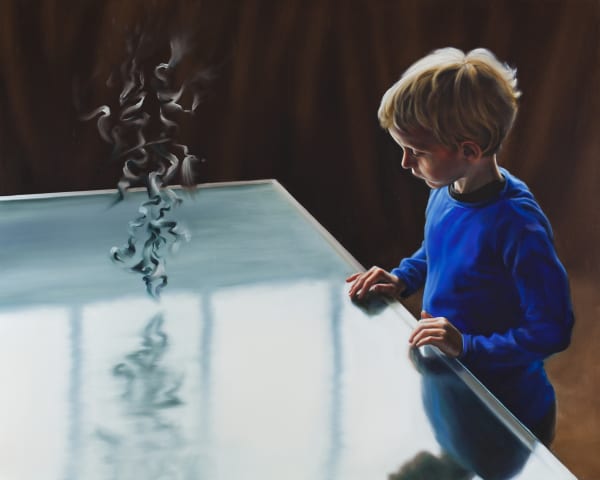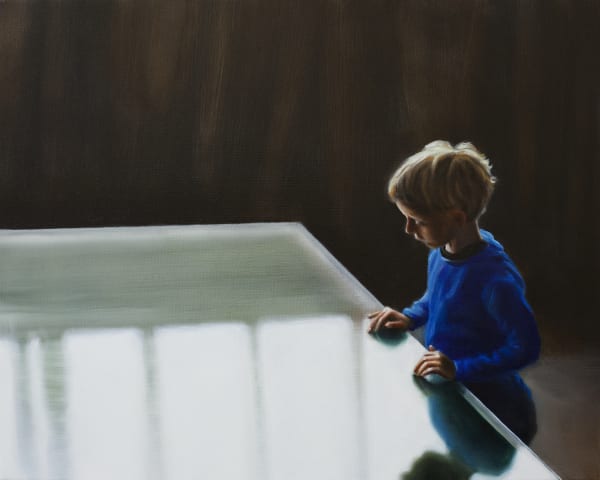David O'Kane: The Zoetrope—Repetition & Difference
Gallery Baton presents The Zoetrope—Repetition & Difference, the solo exhibition of an Ireland painter, David O'Kane (b. 1985), from June 3rd to July 12th in Apgujeong space.
Born from an artist's family in Ireland, he finished a bachelor’s degree on art in Dublin and continued his study at the Academy of Visual Arts in Leipzig. For five years, he studied under Neo Rauch (b. 1960) who has made New Leipzig School (NLS) to receive major art world's attention after the 1990s with his own international reputation as an artist.
Despite his young age, he was awarded with Golden Fleece Award, which is a renowned art award in Ireland for young artists, and he has been awarded with many other art awards. He also has had tens of solo and group exhibitions around the world, building a solid foundation to grow in to the next generation of art stars.
The title of this exhibition as well as the title of the main work showcased, Zoetrope, is the name of the early animation mechanism that allows the viewer to see moving apparition using rotating multiple images. The images shown through Zoetrope repeat and create infinite loop within the limited time. This also metaphorically represents human life, in which people experience the repetition of daily life between reality and ideal in the omniscient viewpoint.
As though it is unknown whether the boy in the work passing through the maze, one by one, in the circle while staring at the wall is real or he is just an apparition when the outer space of the circle is the real area.
It is difficult to define his art world in one sentence as David's works diverge among various medium, such as painting, photography, animation, movie, and drawing. Generally each genre could easily become disconnected unless it is designed for specific exhibit and theme, but it is observed to have a symbiotic relationship in his work. At the same time, the static painting, like a stuffed moment or an ended microcosm, acts as a mediator representing the momentary stories and situations in the work by being given the dynamic role like a frame in a movie.
(In this exhibition, Looking Back series, composed of twenty-four canvases, will also be produced as an animation and be showcased.) The close linkage between these genres (especially for painting and animation) often has a large influence on the painting's formal qualities which become the most fundamental starting point. In other words, the subject occupies the center or a major position within the division of screen, and the work constitutes each and every role for all the things like the space, proportion, and props around the subject.
His work accounts for the influence by characteristic element of Leipzig painter; although visually discernible images are arranged, the composition seems distorted due to the actions and intentions of unclear subject and space-time. Meanwhile, strictly based on figurative painting, David's work depicts released situation from the fully dreamlike and predictable reality. Like the afterimage of the dream, the glimpse of memories about stories and films all jumbled in head, and the unrealistic physical phenomena existing fragmentarily in our consciousness, the clues to what happened before, current situation, and what will happen in the future are not provided in the coexisting situation, while the name, role, and usage of each part could be detected visually.
In particular, the subjects who seem to be engrossed in doing something and the actions and space relating to them lead the viewer to assume that the work's representational motif is based on the story or incident known only to the artist. They also lead the viewer to discover psychological value beyond formalistic value inherent in the work. Thus, the artist repeats the subject with probable narrative, the chronological background and the history and repositions them in a mysterious atmosphere. In doing so, the artist induces for the viewer the atmosphere and situation that are not experienced generally in reality. Like visitors who stepped into the particle accelerator or the chemical laboratory for the first time, we keep thinking about the secretive space that is shared only by a few people and the fodder of situations derived from this space. We then gain a desire to explore the humanistic knowledge and experience that became the origin of the artist's will for form and the source of confidential childhood memories.








